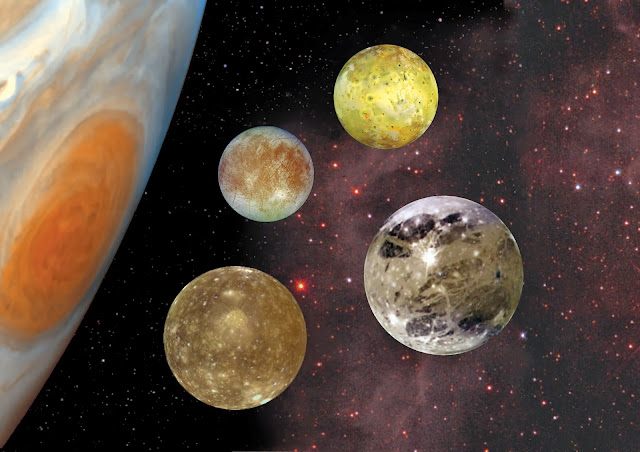Catch a ‘Conjunction Triple Play’ on February 20th as the Moon Meets Venus & Mars:
The Moon passes Mars and Venus last month… this week’s pass is much closer! (Photo by author).
Fear not, the chill of late February. This Friday gives lovers of the sky a reason to brave the cold and look westward for a spectacular close triple conjunction of the planets Mars, Venus and the waxing crescent Moon.
This week’s New Moon is auspicious for several reasons. We discussed the vagaries of the
Black Moon of February
2015 last week, and the lunacy surrounding the proliferation of the perigee supermoon. And Happy ‘Year of the Goat’ as reckoned on the Chinese luni-solar calendar, as this week’s New Moon marks the start of the Chinese New Year on February 19
th. Or do you say Ram or Sheep? Technical timing for the New Moon is on Wednesday, February 18
th at 23:47 UT/6:47 PM EST, marking the start of lunation 1140. The next New Moon on March 20
th sees the start of the first of two eclipse seasons for 2015, with a total solar eclipse for the high Arctic. More on
that next month!
Looking west on the evening of February 20th. Credit:
Stellarium.
And today also marks Shrove Tuesday and the start of Lent, as reckoned 47 days prior to Easter Sunday. In Western Christianity,
Easter falls on the first Sunday past the first Full Moon past March 21
st. This is the demarcation date set for the March Equinox, which actually falls on March 20
th this year. Such is the wonderful world of calendars and astronomy, as the struggle to keep recorded versus actual observed time in sync continues.
The dawn crescent Moon paired with Venus on February 26th, 2014.
Credit and Copyright: Efrain Morales.
The first sighting opportunities for the slim waxing crescent Moon will come Thursday night on February 19
th. And don’t miss the main event on Friday, February 20
th when Mars, Venus and the two day old waxing crescent Moon all fit within a two degree diameter circle — about four Full Moon diameters — prior to sunset. You can’t miss brilliant Venus, shining at -4
th magnitude as the 3
rd brightest natural object in the sky next to the Sun and the Moon. Through a telescope, Venus presents an 88% illuminated disk 12” in size and growing, while Mars shines at +1.3 magnitude and is just 4.2” in size. The closest conjunction of Venus and Mars actually occurs just 48 hours later, when they both fit within a 30’ field of view on the evening of Sunday, February 21
st.
The Moon, Venus and Mars February 21st at 01:00 UT. (Credit:
Starry Night).
The Moon is 2.37 days old and will appear 5 % illuminated during the Friday conjunction, and together, the trio will resemble a
skewed emotion smiley face… think ‘:?’. Manage to catch a time exposure of one of the numerous ISS passes near the Mars/Venus conjunction this week and you could nab a unique ‘:/’ alignment!
Venus spends the first half of 2015 as a brilliant dusk object before heading for solar conjunction on August 15
th, after which it once again passes into the dawn sky. 2015 is an “opposition-less” in-between year for Mars, as it reaches solar conjunction on the far side of the Sun on June 14th before making its slow comeback in the dawn sky. Expect the Red Planet to reach a favorable opposition next on May 22
nd 2016.
Getting closer… Venus and Mars as seen from Venezuela on the evening of February 16th. (Credit and Copyright: Jose Rozada
@jmrozada).
Notice that this week’s tri-conjunction occurs very near the equinoctial point where the celestial equator and the plane of the ecliptic meet. This is the position that the Sun will occupy a month from now when the equinox total solar eclipse occurs.
Want more? One evening later on February 21
st, the waxing crescent Moon will actually occult the +5.9 magnitude planet Uranus in the dusk sky for eastern North American observers:
The path of the February 21st occultation of Uranus by the Moon. Credit: Occult 4.0
This is occultation number 8 in a current cycle of 19 of Uranus by the Moon. And there’s another pass of the Moon in front of the Hyades on February 25
th as it
occults the bright star Aldebaran for a second time in 2015 as seen from Scandinavia.
The path of the February 25th occultation of Aldebaran by the Moon. Credit: Occult 4.0.
Now for the ‘wow’ factor.
The Moon lies just over a light second away at 357,000 kilometres distant. This week, Venus sits 1.4 AUs/ 11.6 light minutes away at 217 million kilometres distant, while Mars is 2.2 AUs/ 18.3 light minutes away at 341 million kilometres distant.
And from the surface of Mars, you’d see a brilliant conjunction of -1.3 magnitude Earth and -1.6 magnitude Venus just one degree in separation, with the +2.5 magnitude Moon nearby.
Perhaps Curiosity will nab this extraterrestrial spectacle, as Earthbound sky watchers gaze back this weekend!

David Dickinson is an Earth science teacher, freelance science writer, retired USAF veteran & backyard astronomer. He currently writes and ponders the universe from Tampa Bay, Florida.
Share this:



